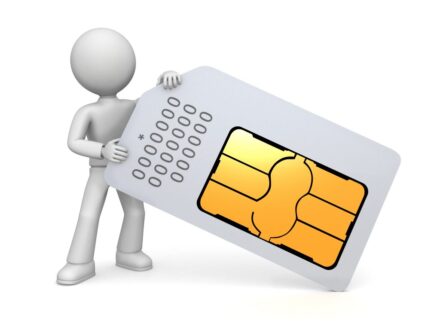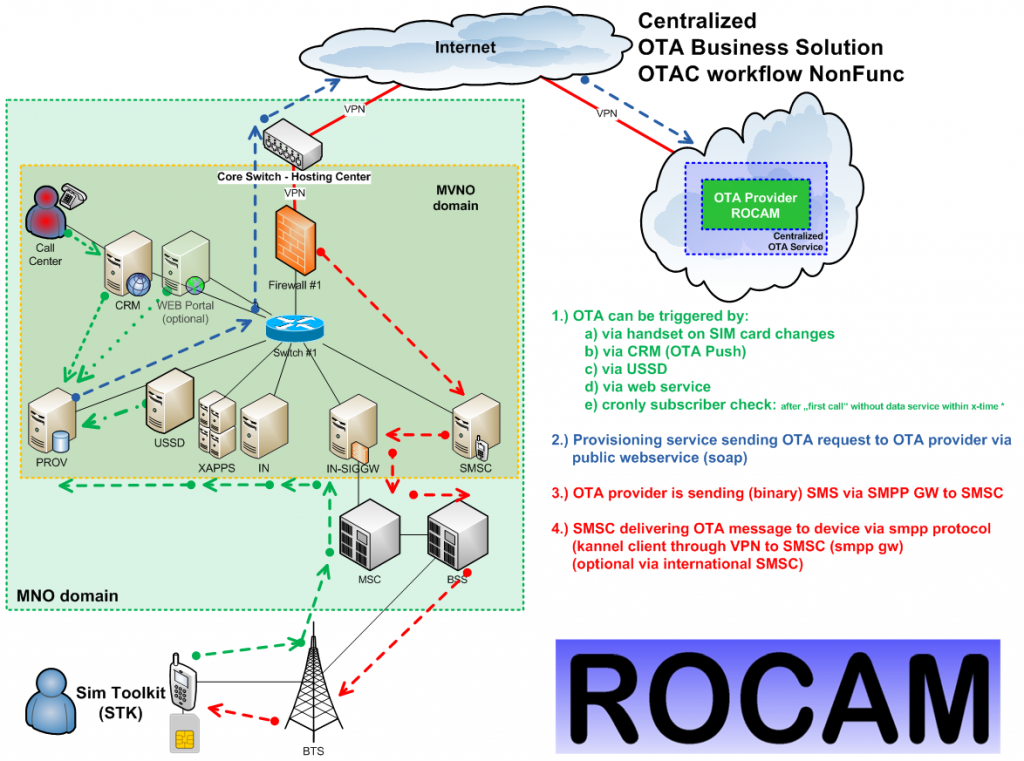Provisioning is the process by which a certain software client on a mobile device is configured with a minimum of user interaction. This can be done by provided data on a SIM card or by provisioning over the air (OTA). That means that needed parameters for WAP connectivity, for example, are pushed over the air from a server to the client of the mobile. The configuration message, specified by the provisioning framework, is encoded in binary XML (WBXML) send over the air as concatenated binary SMS and is handled by its respective client.
The OTACS (Over The Air Configuration Server) supports this functionality. lt is able to create an appropriate configuration message according to the client that needs to be configured. Supported configuration types by OTACS are:
- Internet configuration over GPRS or GSM/CSD
- Get manufacturer and type of handset based on TAC (IMEI)
First, certain configuration parameters are submitted using one HTTP-request to the web service by SOAP (Simple Object Access Protocol). Both the appropriate parameters and the MSISDN are defined. These received parameters are then transformed to a valid CM (Configuration Message) according to the type of conflguration and the mobile handset. This CM is then sent to the handset. lf a handset doesn’t support a configuration by a CM over the air, but supports however the appropriate feature, then a list of the necessary parameters for a manual configuration is provided to the AP (Application Provider).

OTA Device Identification
Identifying devices on the Type Allocation Code (TAC) is the initial eight-digit portion of the 15-digit IMEI and 16-digit IMEISV codes used to uniquely identify wireless devices.
The Type Allocation Code identifies a particular model (and often revision) of wireless telephone for use on a GSM, UMTS or other IMEI-employing wireless network.
=> 195.000+ TAC entries
=> 90.000+ models
=> 7.000+ brands
=> 8.000+ manufacturer
=> updated every month.
OTA Integration
OTA service can be triggered by:
- automatically by Device/Handset -> on SIM card changes via STK
- on demand via ROCAM Web Service (OTA-Push-APN)
- on demand via USSD
- via MVNO CRM – “OTA-Push” & Customer Self Care Service
- Cronly subscriber check: after „first call“ without data service within x-time
OTA APN settings
=> Support for devices, which granting OTA by OS
=> Support for INTRO text message
=> Support for FINAL text message
=> Support for Apple (iOS) devices
=> Support for unsupported OS devices
=> Support for unknown IMEI/TAC via text SMS
=> Support for sending „only text SMS”


OTA RFM (Remote File Management)
- to manage, update and changing SIM card settings via OTA messages remotely
eg: MSISDN, IMSI, HLR & SMSC Address, Forbidden Network, Roaming Information, Connectivity Settings and more - managing java card applet on SIM card
OTA reporting
Reports will be created on customer requirements in standard CSV format. Delivering via upload to FTP server or send via email.
Typically monthly reports are:
- OTA usage amount / month (grouped by status code + summary)
- TOP 40 – device model (amount / percentage)
- TOP 40 – manufacturer (amount/percentage)
- TOP 40 – OS-Detail report (amount / percentage)
- TOP 10 – OS-Group report (amount / percentage)
- Customized reports can be created on demand


